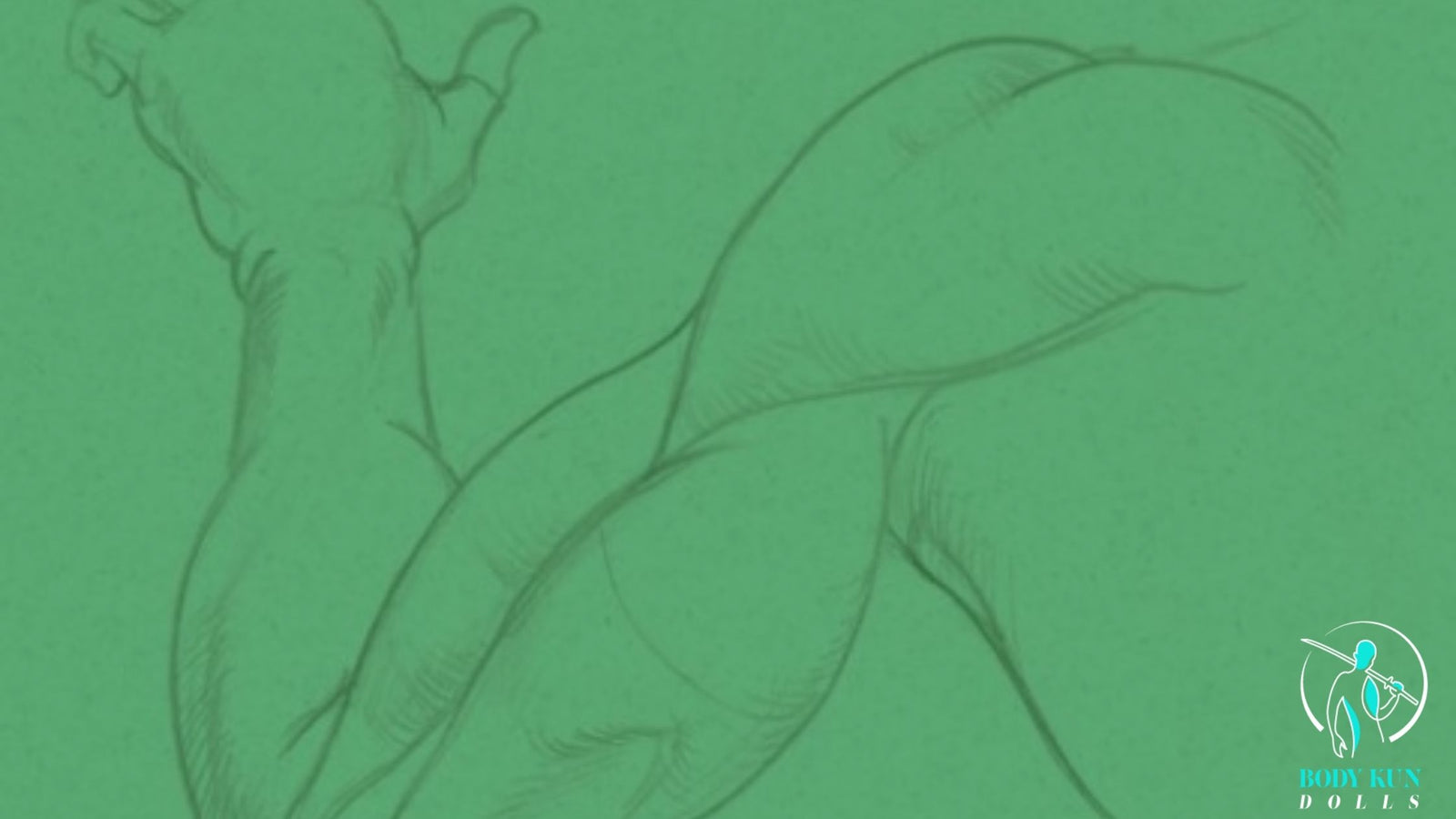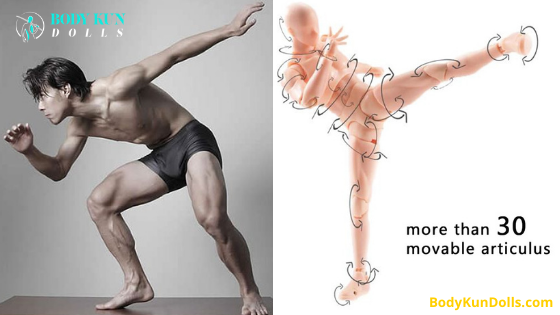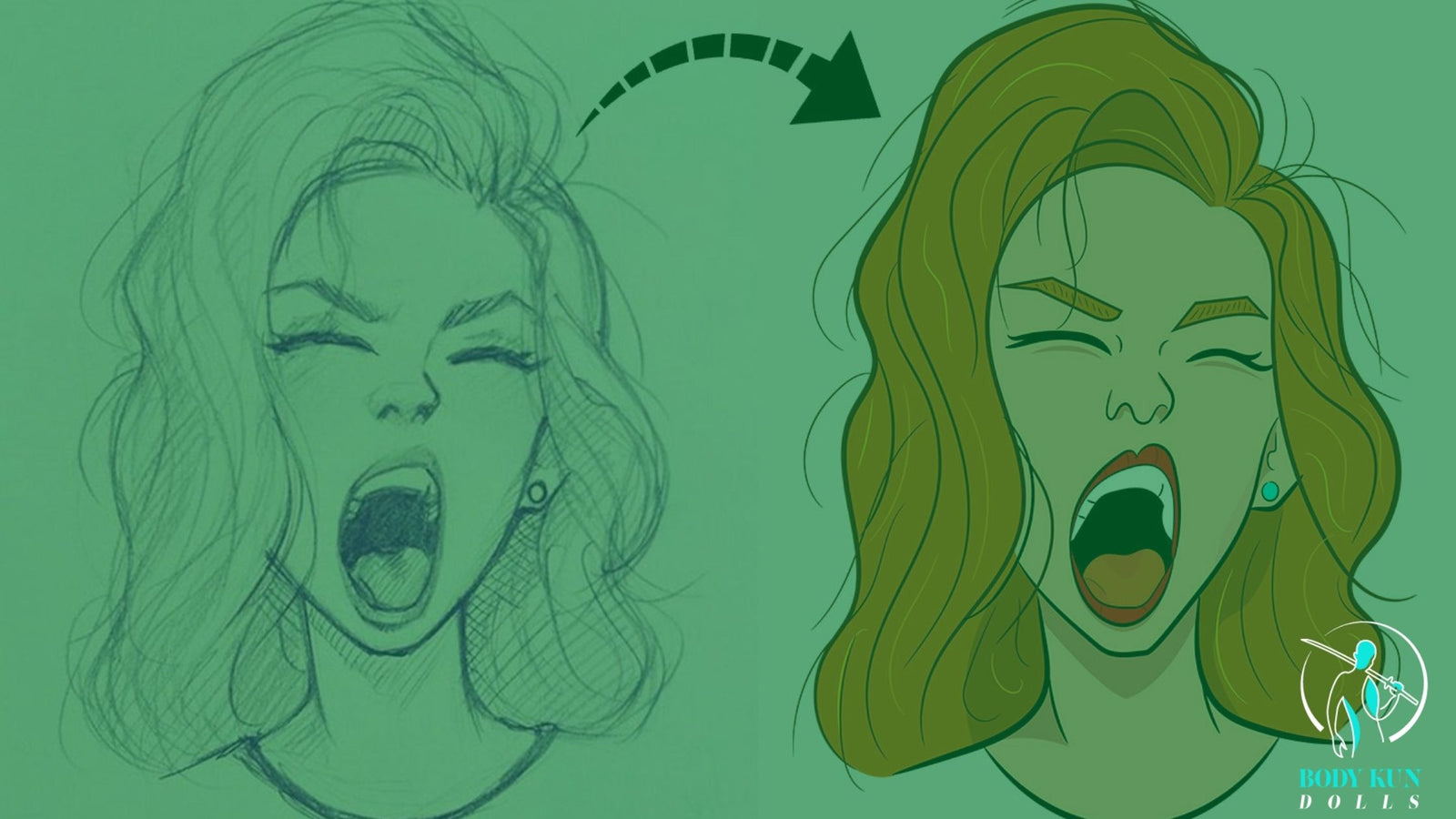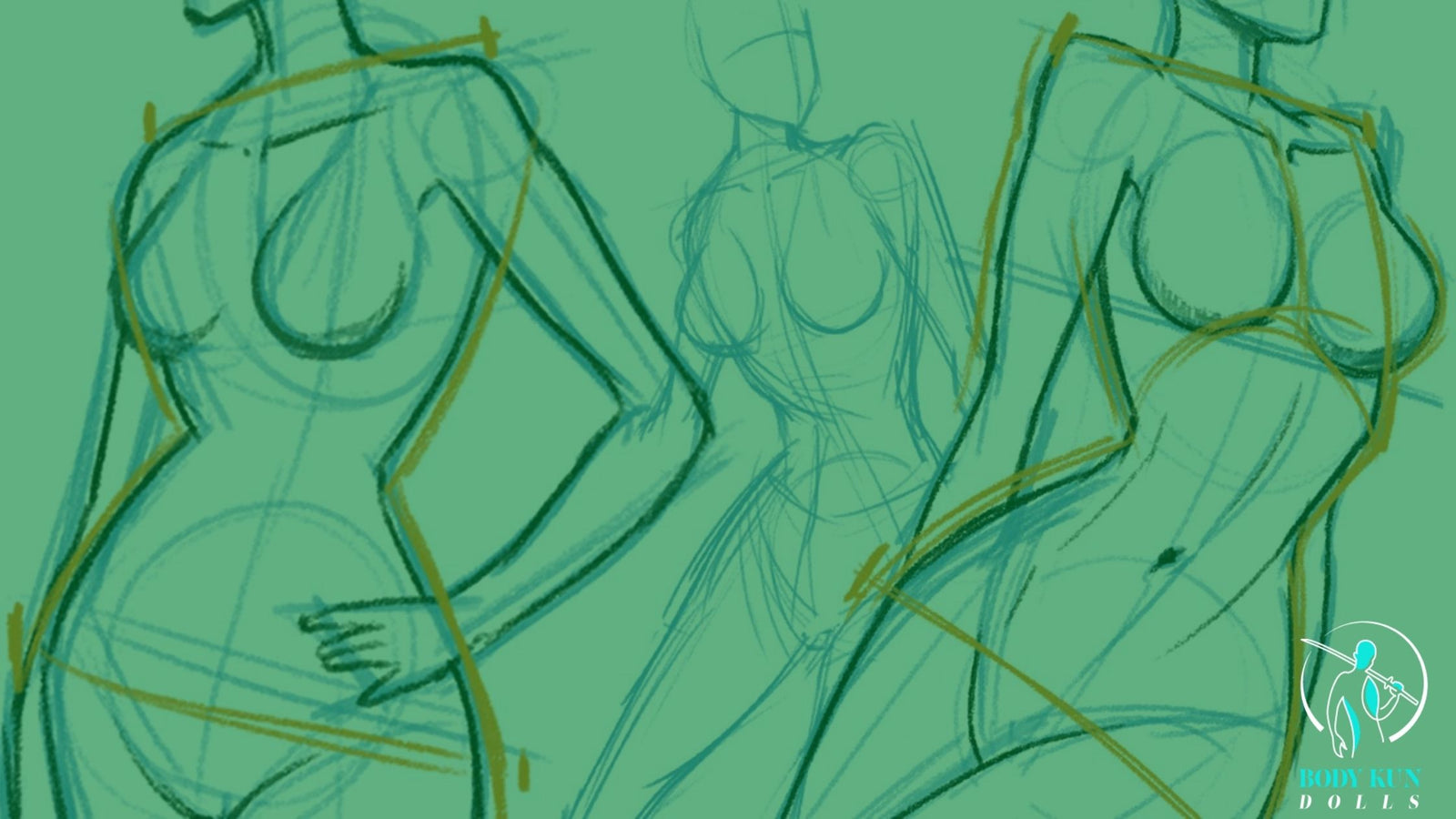Your Cart is Empty
5 min read

If you wish to shift from drawing glorified stick figures to sketching characters with proper anatomy, you're at the right place. It's vital to consider studying anatomy to practice drawing it.
That's going to be the starting point. Unfortunately, there's no getting around that step. If that's clear, here's the article on how to get better at drawing anatomy.
How To Get Better At Drawing Anatomy: Detailed Points
Building A Solid Foundation
The very first step is for artists to draw characters using other people's recipes. Look to build firm foundations first using actual anatomy.
Of course, that'll heavily rely on photo references until one reaches the professional level. Using connections is critical as it provides new input of information and helps one learn.
With a bunch of references in hand, the main exercise is to draw simple volumes. These pertain to sketching objects such as boxes and cylinders directly over the photos.
Look at the position of the limbs and the body. From there, try to draw simple volumes that match the same perspective.
This exercise emphasis is on observation but also on drawing simple volumes in perspective. Once the cylinder man can hold its own without reference, move on to the next step.
Gesture Drawing
This step focuses on gesture drawing. It's a quick and straightforward drawing method that captures movement and feeling in a pose or a figure.
It requires practicing short, medium, and long poses using photo references. Initially, there should be a focus on short poses.
The method captures the feeling and movement of a character's body or a human pose.
Start with the main lines of gestures for the body. Then, go ahead and use curved lines to focus on the energy of the pose.
Keep the reference right next to the drawing area. Then, raise the difficulty by moving the reference away, maybe to a different screen.
At this point, I can even scale it down so that it's not the same size as the sketch. I can then add some mass to the structure by giving the body parts their volume.

Source: Adolfo Arranz behance
Over time, there can be more attention to details like the hands and the feet. Through that, I'll be able to add a lot to the gesture of a character.
Line of Action
At this level, start to maintain some distance from the references and focus on construction. Essentially, it's a simple way to draw the human body that will allow one to draw simple poses from imagination.
This step focuses on proportions at getting you to a point where you can draw simple characters.
The line of action can be described as the longest line of the body. It's usually from the head to the toes.
But it depends on how dynamic the character's pose is and how it shows the flow of the body.
The primary purpose of the line of action is to simplify the character pose. Also, it helps to make it more direct and easier to read.
The Line of Action can also sometimes show where the weight on the body is. It's helpful when you try to balance the character and show what foot they're resting on.
Line of Action helps to build a more robust, clearer pose with the characters.
Generally, I would start with the line of action first and then build the body around that. That way, I'll be able to maintain a flow and fluid movement.
It'll help give the characters a little bit more life rather than having some static poses.
Also, that will add some weight and balance to your characters. Finally, it makes it look more believable when I place them into an environment.
Basic Proportions
For this step, employ an elementary skeleton version of the eight heads high method. That is the most common method to measure a human body proportion.
It requires measuring the height of a person based on the size of a human head. The general rule of this method is that a person will be eight heads high.
But it's also vital to keep in mind that different characters will have different widths and heights.
The method is a very generic way to show where the body parts are. That ensures that the character limbs are of the correct length.
Muscle and Bone Structure
The goal will be to take the proportions that I drew and add muscle and bone structure. Again, the best references are male and female bodybuilder photos, as they've defined muscles.
Focus on the bigger muscles or the muscle groups, particularly those that impact the character's silhouette.
This step is a significant milestone for drawing characters with good proportions and accurate muscle definition. Although I can apply my imagination to some degree, I always keep the references close.
Try drawing the torso by constructing simple shapes using circles. For that, I focus on drawing a series of circles that overlap each other.
At the same time, I may choose to draw them very close to each other.
Now that I've drawn a series of circles, I'll connect them.
Draw two circles here and overlap the circle that's in the front. Again, play around with different sizes and positions.
The circles don't have to be perfect. It simply needs a little bit of visual perspective while adding volume to a torso.
Muscle Insertion
The focus should be to tackle all the surface muscles. That way, I can become familiar with most of the bones of the body at this level.
It involves detailed studies, study names, muscle insertions, and origins of body parts for shortened. It might even require studying the differences in the muscles when they flex or extend.
That is a career-long process that requires studying while still practicing.
To draw the shape of the arms and legs, use the cylinder method. That is, draw a primary cylinder and separate it into two parts.
Leave a tiny gap between the two parts where the elbow would be. Both of these cylinders are tapered towards the end.
Ensure to taper down the cylinder that connects to the elbow. Also, the end of the cylinder for the wrist should be even more tapered.
The reason is that the width of a wrist is smaller than the elbow.
Some people will put a sphere where the two cylinders meet to see the elbow visually. The method is a fundamental way to get a simple arm.
Refer to bodybuilders and insert muscle mass to the characters. Construct characters in different poses.
Try pushing the limits of anatomy using different styles. Take more liberties while still keeping everything logical and aesthetic.
Conclusion
That concludes the article on how to get better at drawing anatomy. I would love to hear your thoughts on what you think of these methods.
Did I list down all the vital skills required to become a master at drawing anatomy?
Or probably I might've missed out on few crucial steps.
Comments will be approved before showing up.

3 min read
You're still looking to find the perfect pose to practice your figurre drawing art?
We've collected the best 7 drawing reference sources you can find online free and paid, here we have listed each and everything that you will need in your art journey in this quick guide.

5 min read

5 min read
Do you wish to learn how to draw a female body realistically? If yes, then this article is for you!
This tutorial will provide you with seven easy steps to help you create an impressive realistic female body.